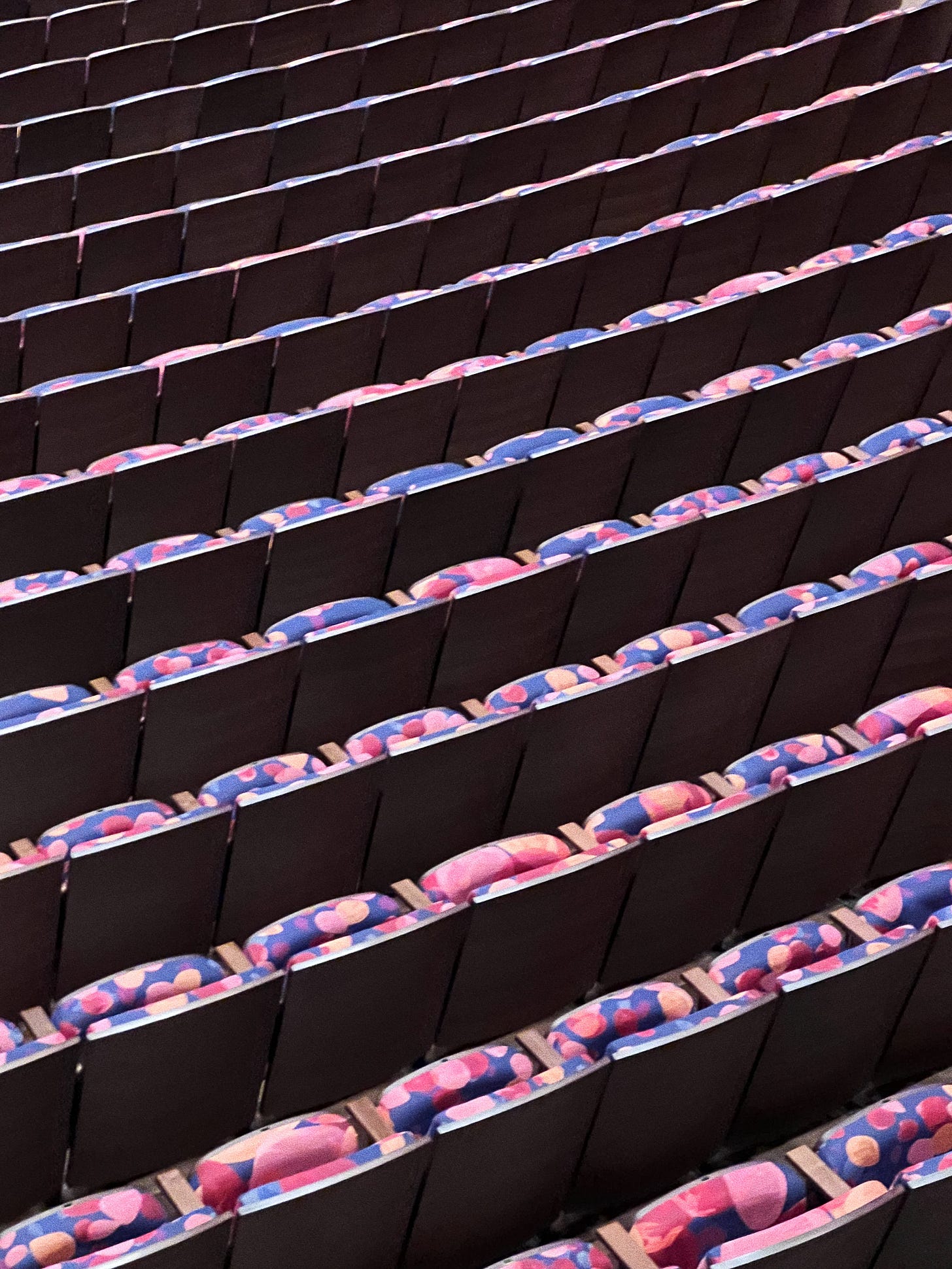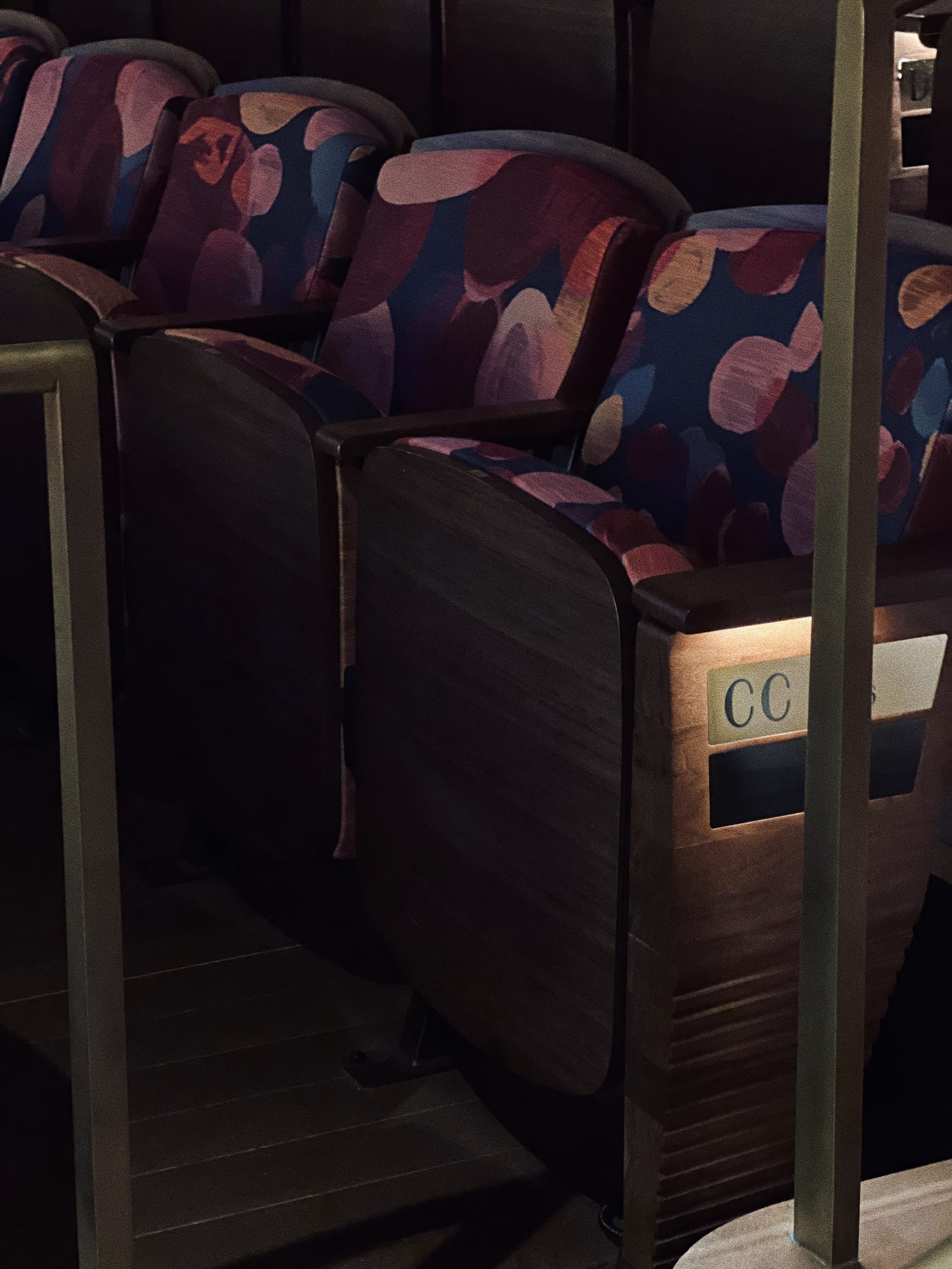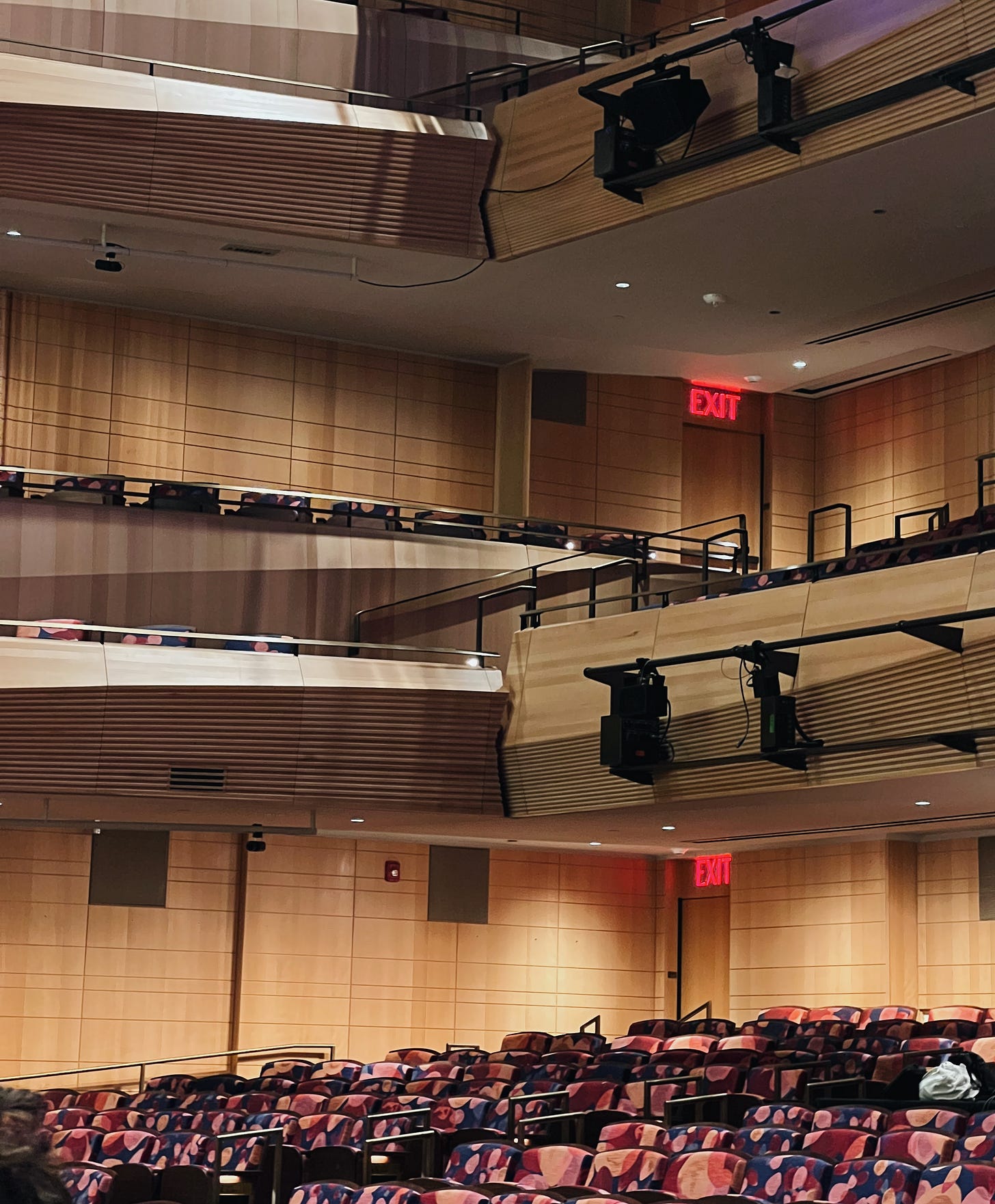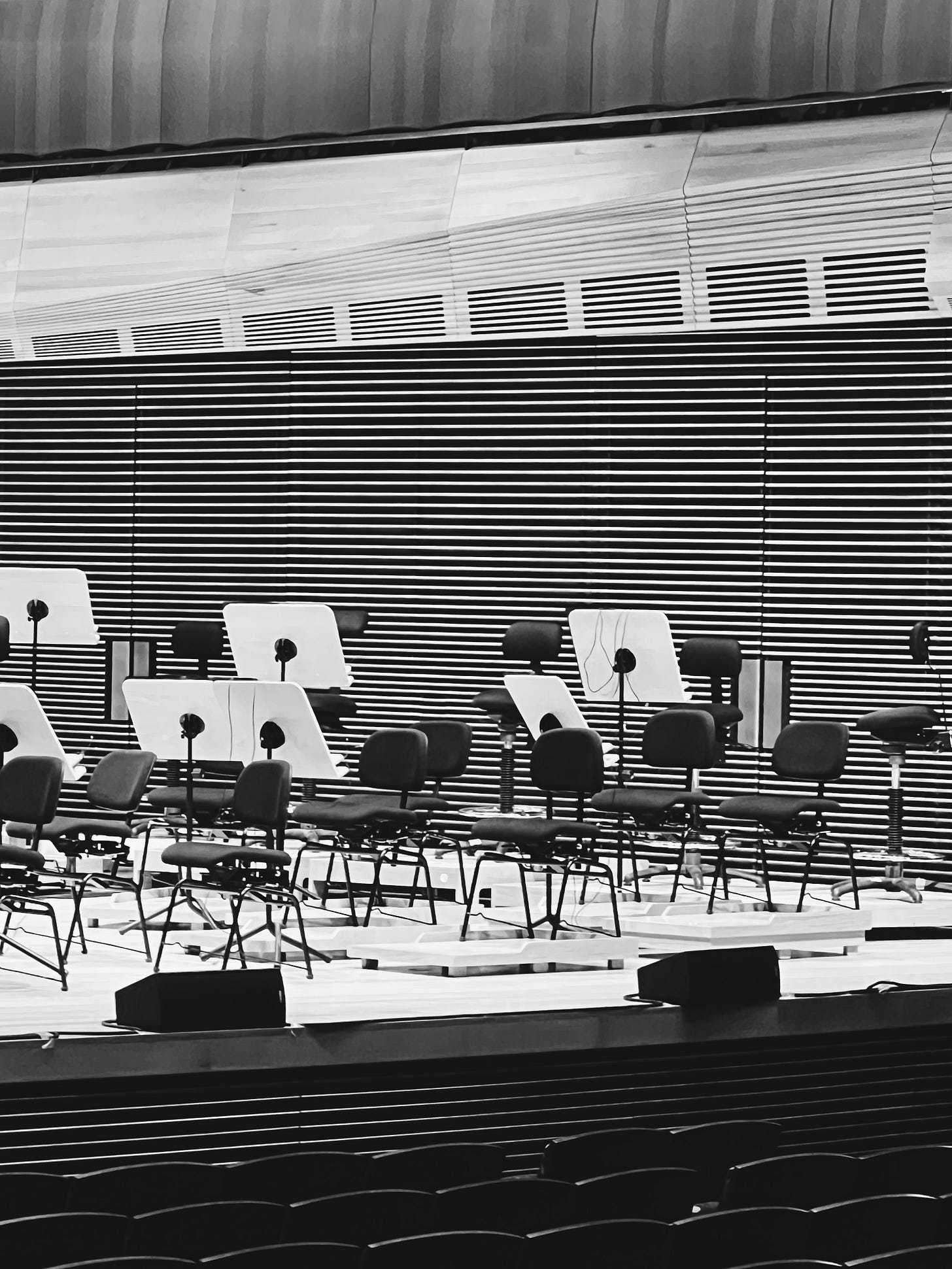What Does Belonging Sound Like at Lincoln Center's David Geffen Hall?
Desk Note 12 - at the Desk of Sybil Wa, a NYC-based Architect
This week I’m writing From the Desk of ECF at the desk of Sybil Wa. This is the first of what I hope will be several conversations with leaders across industries on topics ranging from urban planning to city living, travel, and more. To some, Sybil is a designer and project architect. To colleagues, she is Diamond Schmitt’s New York City studio manager. To urban communities across Canada and the U.S., she is an advocate. To her family, she is mom. To lucky students, she is a professor. To me, she is a mentor and inspiration. I’m thrilled to have sat down with her for a candid, yet intentional discussion. I hope you enjoy reading it.
I caught up with Sybil on a sweltering summer afternoon in Midtown Manhattan. As I reread through the discussion points scribbled in my notebook from a high-top table at the Nordstrom cafe, I watched as people jay-walked around cabs to get to the part of the sidewalk covered in shade. New Yorkers are always in a hurry; perhaps most so when walking from the Subway station to any air-conditioned building in the brutal July heat. From the crowds, out came Sybil onto the crosswalk and into the cafe, effortlessly put together in a black dress and sunglasses despite rushing to meet me after her previous meeting ran over. These days I wonder how she is able to do it all. “With focused purpose and a lot of matcha,” she laughs.
Sybil, originally from Canada, leads Diamond Schmitt’s New York City architecture studio. Her personal interests in the arts carry through to her professional practice, from the Four Seasons Centre for the Performing Arts to the Toronto Center for the Arts. So when Lincoln Center got serious about addressing the decades-long acoustical issues at David Geffen Hall, Sybil, and the Diamond Schmitt team naturally had some ideas to fix the sound. But they didn’t stop there.
“At first, the purpose was about music and acoustics, but it quickly became about so much more. What it was really about was bringing people together,” she explains.
She means that quite literally, giving credit to the many hands and minds at work across teams of consultants and creatives. She’s also making reference to the audience, the artists, city dwellers, and the general public. Sybil is an outspoken advocate for cultural space and programming in cities. Unfortunately some of the historical and beloved performing arts centers, including Lincoln Center, originally came to be as a result of a disruption of a vibrant community. The history of the “slum clearance” of San Juan Hill to create the complex cannot be ignored. And while it can’t be undone now, the renovation of today’s David Geffen Hall provided an opportunity to critically question the feeling of belonging not only for audience members but also for incredibly talented and diverse artists who travel from around the world to create and perform at Lincoln Center.
To take a traditional planning or design project, and create an inclusive end-user experience that goes beyond the physical “deliverable” requires humble intentionality, a deep willingness to listen, and co-producing knowledge from the early stages - I learned this from experience. As someone who grew up wanting to be a Broadway star (who knows, maybe it could still happen one day), I was lucky enough to be involved in a recent urban planning studio to help envision a mixed-use performance space for Red Sky Performance by Sandra Laronde. I and eleven classmates led by Anthony Borelli and Sybil herself, worked across different landscapes to not only provide a strategic plan for Red Sky but also to use our experiences to deconstruct traditional planning paradigms and center Indigenous ways of knowing. I should write an entire desk note on that alone, but in short, I learned lessons that I believe can be applied to any planning & design project:
Different landscapes require different typologies and programming. This may sound obvious at first, but it is often understudied before plans are drafted. How much do you really get to know the landscape you’re working around? It’s about more than reviewing a topographical survey. One needs to feel the ground, observe the light, and listen to what the landscape communicates about its relationship with the built environment.
Co-produce knowledge. This requires stepping back from our traditional ideas of knowing. There is so much value in recognizing the legitimacy of oral storytelling.
Center long-term relationship building over short-term “check the box” community engagement meetings.
Whether you are an urban planner, designer, or developer, my hope, and Sybil’s too, is that we create performance spaces where anyone in the city can always feel some sense of discovery. That goes for the most avid theater-goer, an acoustical expert, or someone who simply passes by.
A few weeks before our iced-matcha latte break from the summer heat in conversation at the cafe, Sybil led me and other students on a tour of the reopened Hall. She pointed out intentionality in materials, color selection, and little details that the public may not always see, but that, certainly, they will feel in the collective experience. The team sat in on rounds of acoustical engineering meetings, and musician engagement sessions, and revised multiple iterations to get it right. To get it right, Sybil explains, “the acoustic quality was digitally simulated and tested in a physical scale model that is the size of a walk-in freezer.”
The Hall’s past history of flawed sound is now a story of past performances.
“Our design pushes creative vision to make what is a necessarily technical solution become an artistic vision,” Sybil graciously admires as we take a seat in the balcony. The Philharmonic is getting ready for a mid-day rehearsal and the strings are warming up. From here, David Geffen Hall looks, and sounds, reflective of a modern New York City, one where all belong.
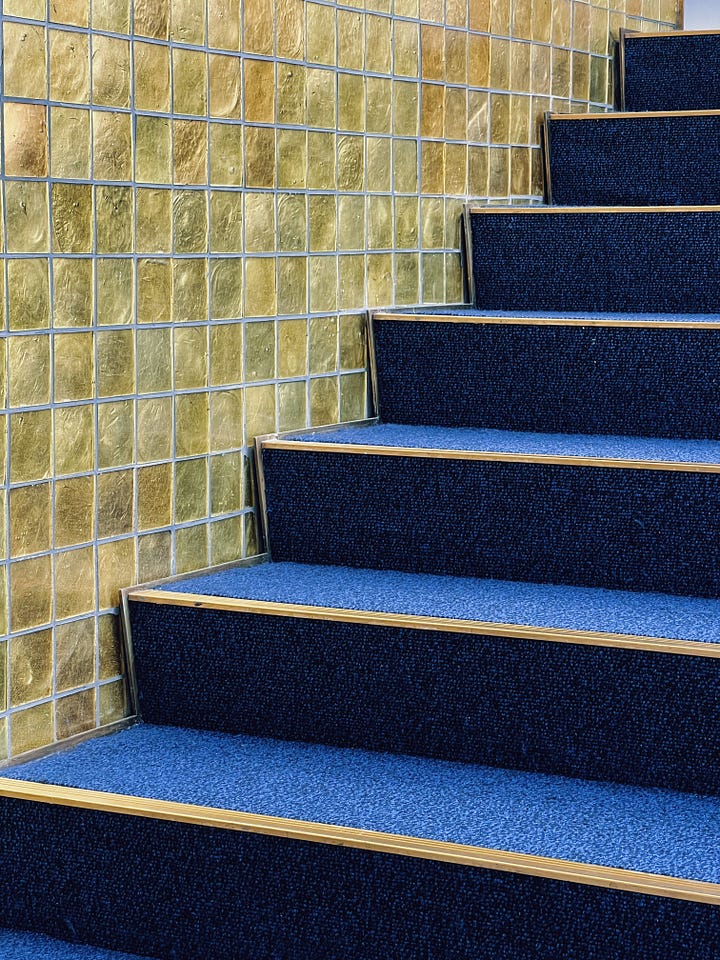
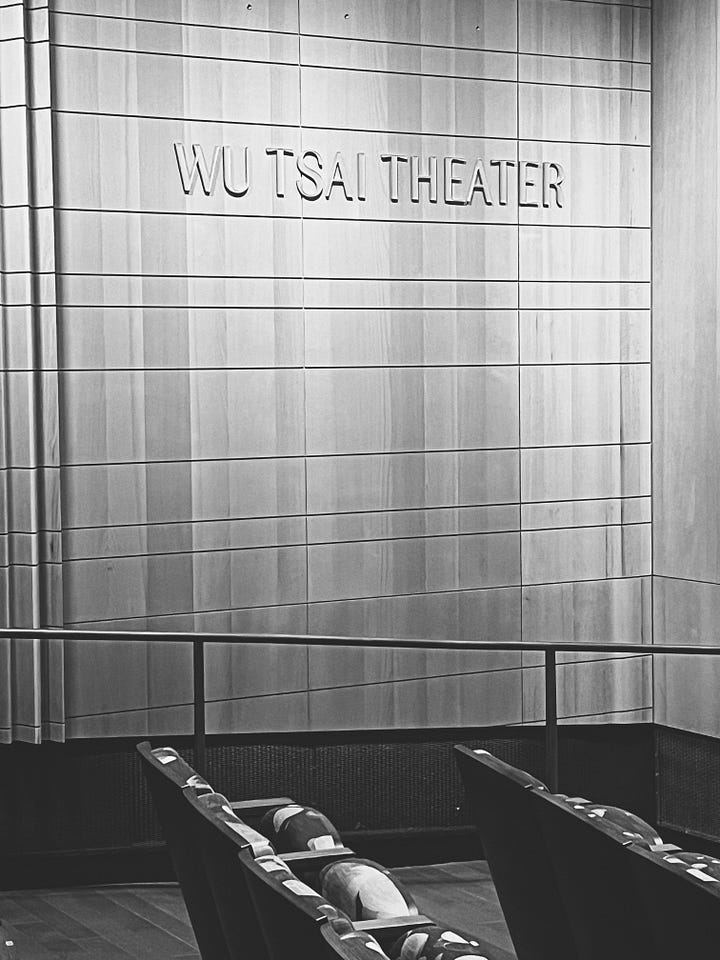
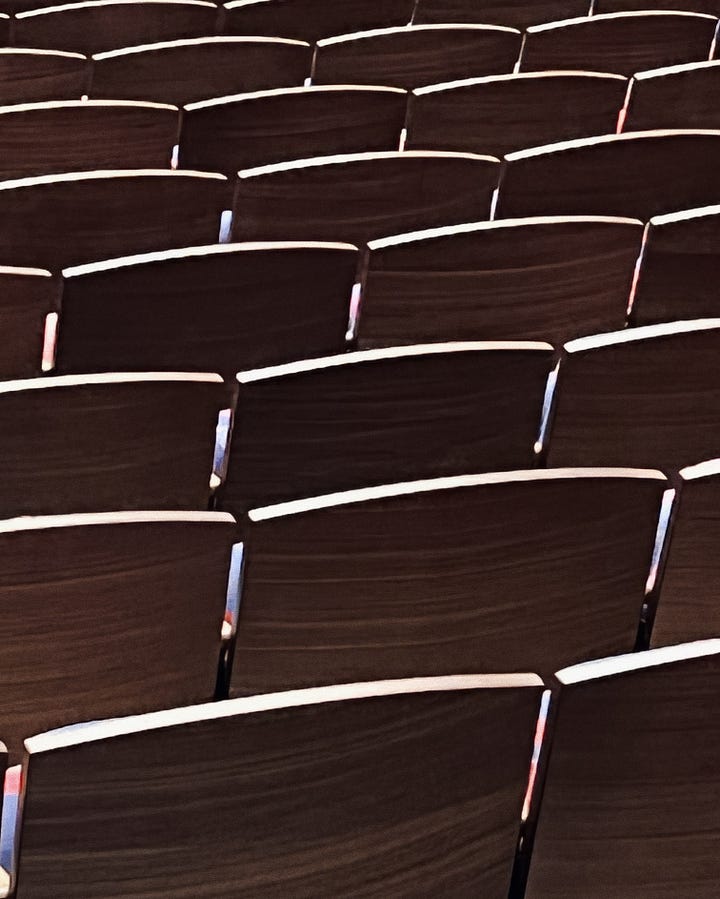
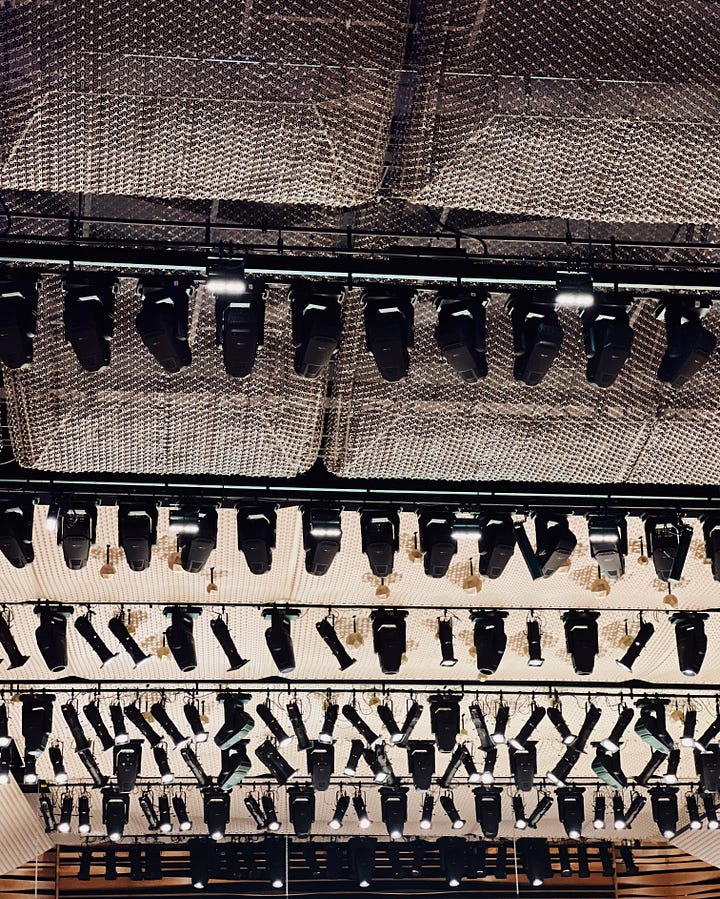
Written by Ethan Floyd; Edited by Ethan Floyd & Sybil Wa. Photography by Ethan Floyd, except for the photograph below courtesy of Sybil Wa.
MORNING, NOON, NIGHT
Inspired by the title of one of my favorite coffee table books, each desk note ends with something interesting for you to see, do, read, and/or wear as told through the lens of a day’s journey from sunrise to sunset. This week I asked Sybil for her takes on M.N.N!
MORNING – matcha!!! (Readers, feel free to drop your favorite matcha spots in NYC in the comments below.)
NOON – a short walk outside. Sometimes it’s micro short or molecular, even, depending on what’s happening that day. But, getting outside always helps bring clarity of thought.
NIGHT – night shift, night owl, nightgown. Serendipity always includes family, friends, and food.
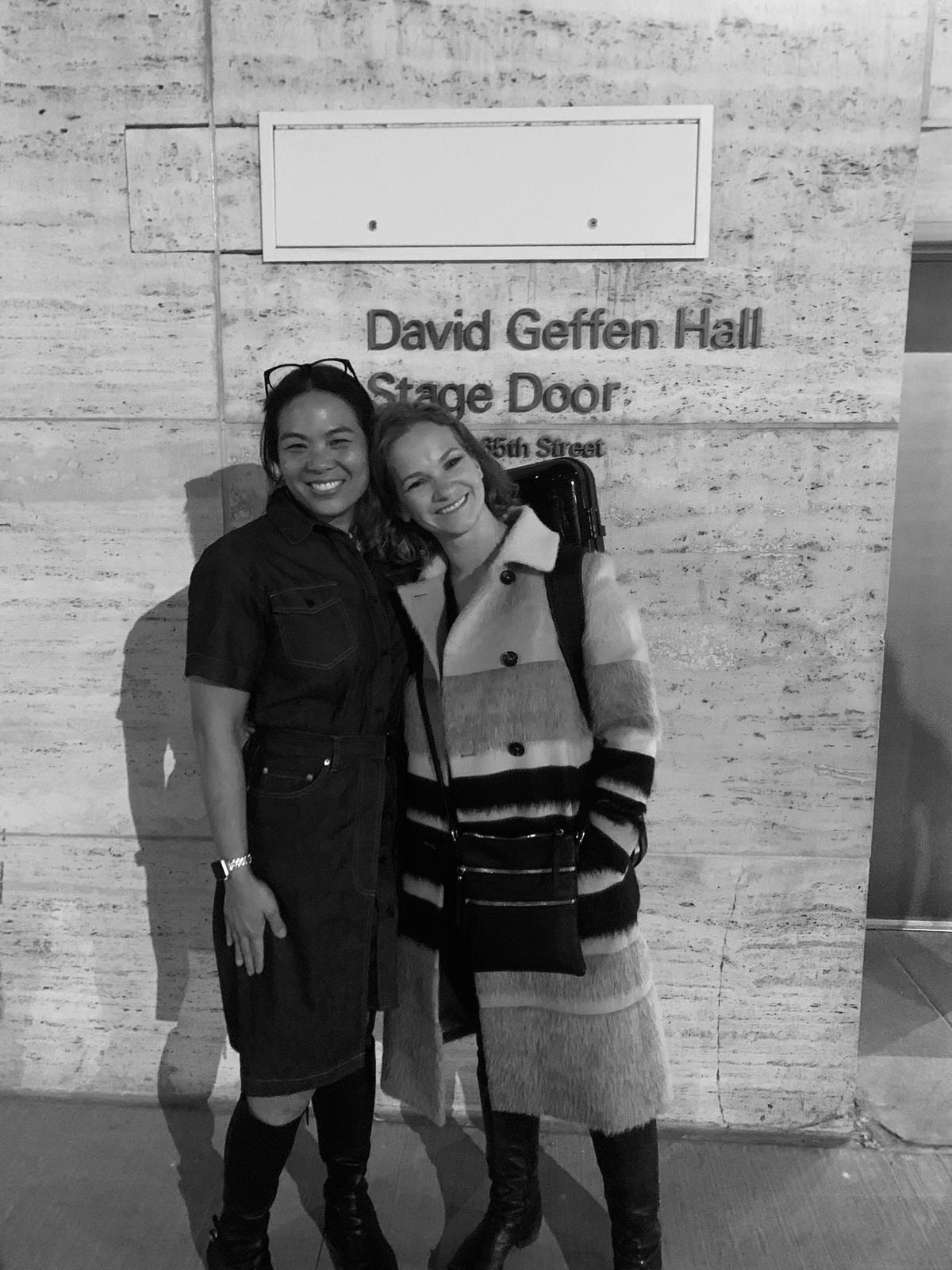
ONE LAST NOTE
I am so excited to keep writing these desk notes. It started as a summer challenge to myself to write more. It’s turned into a fun passion project. And it means the world to me every time a new person joins this little corner on the internet. If you’re enjoying my notes From the Desk of ECF, please share them with a friend using the link below or repost them on Instagram or Pinterest. You can also join the blogging community on the substack app available for iPhones and Android users. I’m thrilled you’re here! Thank you for the support! ECF



